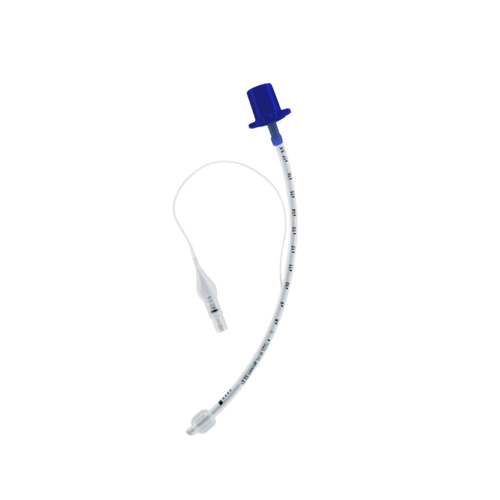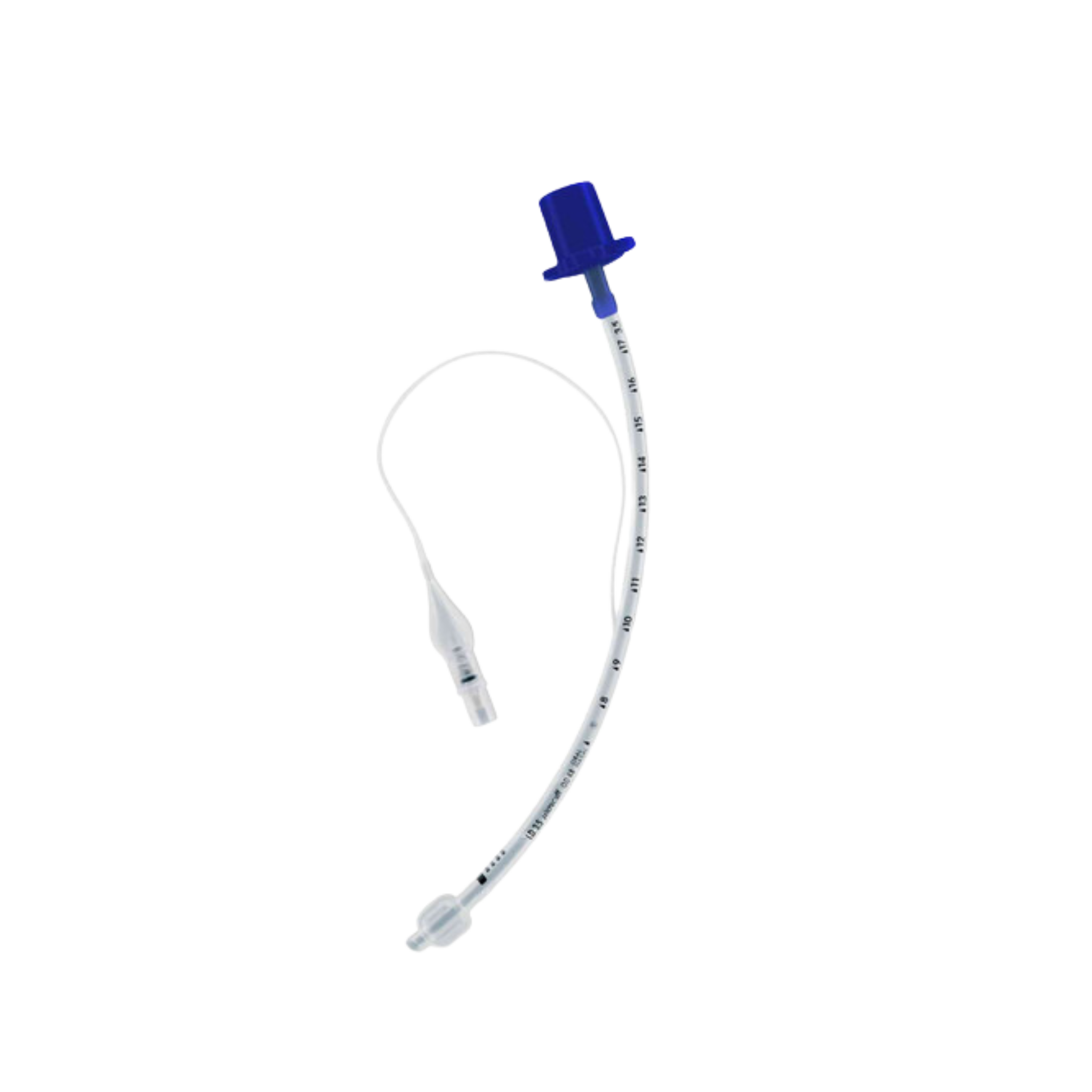Paediatric Endotracheal Tubes with MICROCUFF Technology
Ensure safe, effective paediatric intubation with MICROCUFF Paediatric Endotracheal Tubes—precision-designed for optimal airway protection.
Summary
Airway management in children presents unique challenges, requiring specialised equipment that balances security and safety. The Avanos MICROCUFF Paediatric Endotracheal Tube offers an advanced solution with its high-performance, low-pressure cuff and anatomically appropriate design. Ideal for neonates through to adolescents, these tubes deliver reliable sealing, reduced aspiration risk, and lower airway trauma. Backed by clinical evidence and trusted globally, MICROCUFF technology sets a new standard in paediatric intubation.
What Is a Paediatric Endotracheal Tube?
A paediatric endotracheal tube (ETT) is a flexible tube inserted into a child’s trachea (windpipe) to maintain an open airway or deliver mechanical ventilation. Unlike adult patients, paediatric anatomy—such as narrower airways and proportionally larger tongues—demands carefully sized, precision-designed tubes.
MICROCUFF Paediatric ETTs are specially developed for:
- Neonatal and paediatric intubation
- Short- and long-term mechanical ventilation
- Procedural sedation or anaesthesia
- Emergency and ICU airway management
The cuff in these tubes allows for a seal within the trachea, preventing air leaks and aspiration during ventilation.
Sizing and Selection for Paediatric ETTs
Correct sizing is critical to avoid complications such as subglottic injury, poor ventilation, or tube dislodgement.
MICROCUFF Tube Sizing Guide:
- ID (inner diameter): 2.5 mm to 6.0 mm available
- Age-specific recommendations:
Sizing Tip:
A commonly used formula for uncuffed tubes is (Age in years / 4) + 4, while MICROCUFF tubes may allow sizing down by 0.5 mm due to superior sealing ability.
All tubes feature depth markings and radio-opaque lines for placement verification.
Benefits of Cuffed vs Uncuffed Tubes in Children
Historically, paediatric tubes were mostly uncuffed due to concerns about airway injury. However, advances in cuff design—especially MICROCUFF—have led to a shift in best practice.
Cuffed ETT Benefits:
- Better ventilation control (no need to oversize the tube)
- Reduced need for tube changes
- Lower rates of aspiration
- More accurate monitoring of end-tidal CO₂ and tidal volume
- Safer anaesthesia with consistent gas delivery
The American Academy of Pediatrics now supports the use of cuffed tubes in children over neonates, provided appropriate sizing and monitoring are used.
How to Use and Monitor MICROCUFF Tubes
Correct technique is essential to maximise the benefits and minimise risks.
Insertion and Monitoring Steps:
- Choose correct size based on weight and age
- Lubricate the cuff before insertion
- Insert the tube under direct laryngoscopy
- Inflate the cuff with minimal air to achieve seal (usually <20 cmH₂O)
- Confirm placement via capnography and auscultation
- Secure the tube using dedicated tape or fixation devices
- Monitor cuff pressure regularly using a manometer
Replace the tube if there are persistent leaks, high cuff pressures, or airway trauma is suspected.
Featured Products

Why Choose MICROCUFF Paediatric Tubes?
Avanos MICROCUFF ETTs use innovative technology to offer better performance than traditional uncuffed or high-pressure tubes.
Key Advantages:
- Ultra-thin polyurethane cuff – Provides a high-seal at low pressure, reducing tracheal trauma
- Anatomically placed cuff – Located closer to the distal tip for safe use in shorter paediatric tracheas
- Even pressure distribution – Minimises risk of mucosal injury
- Minimised microaspiration – Reduces risk of ventilator-associated pneumonia (VAP)
- MRI-compatible design – Safe for imaging procedures
Each tube is also DEHP-free, latex-free, and meets rigorous international safety standards.
According to Pediatric Anesthesia Journal, MICROCUFF tubes significantly reduce the need for tube changes due to leakage or malposition, improving patient safety and resource efficiency.
When and Where to Use Paediatric ETTs
Paediatric endotracheal tubes are essential in a wide range of clinical settings:
Indications:
- Respiratory failure
- Airway obstruction
- General anaesthesia
- Emergency resuscitation
- Bronchoscopy or airway procedures
Common Use Settings:
- Emergency departments
- Neonatal intensive care units (NICUs)
- Operating theatres
- Paediatric intensive care units (PICUs)
- Retrieval and transport teams
The MICROCUFF design is especially beneficial in long-term ventilation and high-risk respiratory patients due to reduced aspiration and consistent airway sealing.
Conclusion
The Avanos MICROCUFF Paediatric Endotracheal Tube represents a new era in paediatric airway management—offering unmatched sealing performance, safety, and clinical control. From NICUs to operating rooms, these tubes are designed to deliver predictable results in even the most delicate patients.
With a focus on low-pressure cuffs, anatomical accuracy, and reduced complications, MICROCUFF tubes are trusted by paediatric anaesthetists and intensivists around the world.
Choose safer airway management with MICROCUFF.
Shop MICROCUFF Paediatric Endotracheal Tubes today and ensure precision, safety, and comfort in every intubation.
📞 Call 1300 615 193 or order online at our website.
The Paediatric Endotracheal Tubes collection features MICROCUFF technology designed for safe, precise airway management in neonates, infants and children. These cuffed paediatric ETTs provide reliable sealing at low pressure, reduced aspiration risk and improved ventilation control across anaesthesia, ICU and emergency settings.
Items included in this collection:
• MICROCUFF paediatric endotracheal tubes
• Cuffed ETTs for neonates, infants and children
• Multiple inner diameters (2.5 mm to 6.0 mm)
• Oral curved paediatric ETT designs
• Radiopaque, depth-marked endotracheal tubes
• Latex-free and DEHP-free airway tubes


Recently viewed
FAQs
Paediatric ETTs are smaller, anatomically designed and sized to protect delicate airways while ensuring effective ventilation.
Yes. Modern MICROCUFF paediatric tubes use low-pressure cuffs that reduce airway injury and aspiration risk when correctly sized and monitored.
Paediatric ETTs are available in sizes from 2.5 mm to 6.0 mm inner diameter to suit neonates through to adolescents.
MICROCUFF tubes provide better sealing at lower pressures, fewer air leaks and reduced need for tube changes during ventilation.
